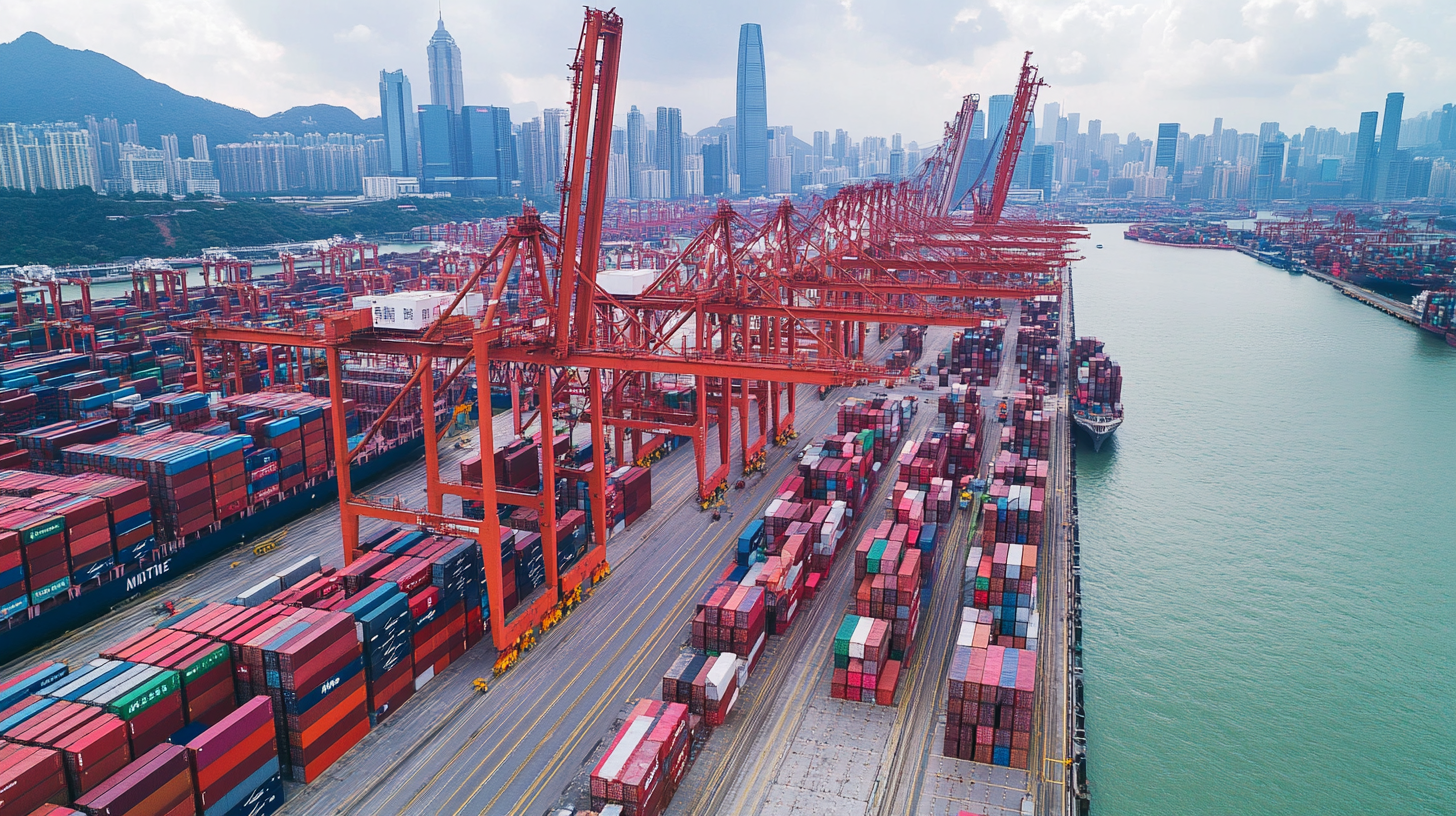As the ongoing tariff battles between the United States and China continue to shape global trade dynamics, the Chinese manufacturing sector has managed to gain significant momentum, particularly in the realm of office storage solutions. According to a recent report by Statista, the global office storage market is projected to reach $36 billion by 2026, driven by the increasing demand for efficient and innovative storage systems. Despite the tariffs imposed on various goods, Chinese manufacturers have adapted by enhancing their production capabilities and diversifying their offerings, thus solidifying their position in the market. This resilience not only reflects China's manufacturing strength but also highlights the critical role of effective office storage in optimizing workplace organization and productivity. As organizations seek to navigate these turbulent trade waters, the focus on high-quality and affordable office storage solutions remains paramount.

China's manufacturing sector is showcasing remarkable resilience amidst the ongoing tariff battles with the United States. As tariffs escalate, the ability of manufacturers to adapt and innovate has become crucial. Companies in key regions are leveraging strong industrial chains to not only withstand the impacts of these tariffs but also to enhance their product quality and supply chain dynamics. This strategic pivot allows Chinese manufacturers to remain competitive and fulfill global demand for high-quality products, even in a challenging environment.
Furthermore, the evolving landscape of global trade emphasizes the need for strategic resilience. As businesses navigate the complexities brought forth by tariff adjustments and shifting governmental policies, there’s a growing emphasis on diversifying supply chains and exploring new partnerships. By rethinking traditional approaches and focusing on robust supply chain strategies, manufacturers are positioning themselves to harness opportunities that arise from this tumultuous period. The adaptability observed within China's manufacturing ecosystem serves as a lesson for industries worldwide, exemplifying how resilience can drive growth even in the face of significant challenges.
This chart illustrates the resilience of China's manufacturing sector, represented by the Purchasing Managers' Index (PMI) from 2019 to 2023. Despite tariff battles with the US, the PMI shows an overall upward trend, reflecting sustained manufacturing growth.
Recent innovations in office storage solutions are driving significant growth within the manufacturing sector in China, particularly against the backdrop of ongoing US-China tariff battles. According to a report from Statista, the global office furniture market is projected to reach $123 billion by 2025, with a notable emphasis on modular and multi-functional storage options. China's manufacturing industry is adapting to these trends by embracing new technologies and sustainable materials, which not only enhance efficiency but also meet the evolving demands of modern workplaces.
One key area of innovation is the integration of smart technology into office storage systems. A study by ResearchAndMarkets estimated that the smart office market is expected to grow by over 25% annually through 2026. Companies in China are increasingly developing intelligent storage solutions that utilize IoT technology, allowing users to optimize space usage and track inventory seamlessly. This push towards automation and smarter designs reflects the broader shift in workplace culture, where flexibility and functionality are becoming paramount. As Chinese manufacturers continue to innovate and expand their product offerings, they are well-positioned to meet both domestic and international demands for advanced office storage solutions.

As the US-China trade relationship continues to evolve amid escalating tariff battles, the implications for global supply chains are profound. According to a report by The World Bank, trade tensions have resulted in a 7% increase in costs for manufacturers relying on cross-border logistics. This disruption has compelled many companies to reassess their supply chains, with 34% seeking alternatives to Chinese suppliers, as indicated by a recent survey from the Institute for Supply Management.
The shift in supply chain dynamics has also fueled innovative manufacturing practices in China. A study by McKinsey revealed that China's production efficiency has improved significantly, with productivity levels rising by 20% in the last five years alone. This efficiency, coupled with the country's robust infrastructure, makes China an attractive hub for office storage solutions as companies strive to streamline operations and minimize costs. The struggle for optimal storage solutions in the face of these challenges highlights the need for businesses to navigate this complex landscape carefully, leveraging data and technology to stay competitive in a rapidly changing global market.

The office storage solutions landscape is evolving rapidly amidst economic uncertainties. As highlighted in the latest research on the cloud office sector, the integration of cloud computing technology is transforming workplace dynamics, allowing businesses to manage data from remote servers and enhancing overall efficiency. This shift towards cloud functionality has prompted companies to reevaluate their storage requirements and optimize their office layouts to accommodate flexible work styles, such as hybrid and remote setups.
Moreover, the Asia-Pacific office leasing market is witnessing divergent trends. While cities like Kuala Lumpur show resilience with improved rental rates—rising by 3.3% year-on-year in Q3 2023—major Chinese cities, including Shanghai and Shenzhen, are grappling with increasing vacancy rates surpassing 20%. This divergence emphasizes the importance of strategic office storage solutions as companies adapt to fluctuating market conditions and spatial demands. With the global home office furniture market projected to grow at a compound annual growth rate of approximately 4.2% from 2024 to 2032, organizations must invest wisely in storage solutions that enhance productivity and respond to an ever-evolving work environment.
This pie chart illustrates the market share distribution of various office storage solutions in 2023. Filing cabinets account for 25% of the market, followed by shelving units at 35%, desk organizers at 15%, mobile storage at 10%, and other storage solutions making up the remaining 15%. This data highlights the key trends in office storage amidst current economic uncertainties and tariff impacts.
The future of Chinese manufacturing in the context of ongoing US-China tariff battles presents a landscape rich with both opportunities and challenges. According to a report by McKinsey, the manufacturing sector in China is projected to grow at a compound annual growth rate (CAGR) of 5.5% through 2025, driven by advancements in automation and smart manufacturing. This growth is critical for industries like office storage solutions, where innovation in design and efficiency can significantly impact market share and production costs.
However, the challenges posed by tariffs are reshaping supply chain strategies. The American Chamber of Commerce in China reported that 75% of member companies experiencing tariff impacts are reevaluating their sourcing strategies. This situation compels Chinese manufacturers to enhance their competitiveness through increased efficiency and product differentiation. As businesses adapt, there is a golden opportunity for the office storage sector in China to leverage cutting-edge technologies to cater to the evolving needs of global markets, positioning themselves as leaders in innovation amidst turbulent trade relations.
| Metric | 2022 Data | 2023 Projection | Growth Rate (%) |
|---|---|---|---|
| Total Manufacturing Output (Billion USD) | 4,700 | 5,000 | 6.38 |
| Office Storage Equipment Exports (Million USD) | 1,200 | 1,500 | 25.00 |
| Number of Manufacturing Firms | 80,000 | 85,000 | 6.25 |
| Employment in Manufacturing Sector (Million) | 30 | 31.5 | 5.00 |
| Investment in Manufacturing (Billion USD) | 600 | 700 | 16.67 |
